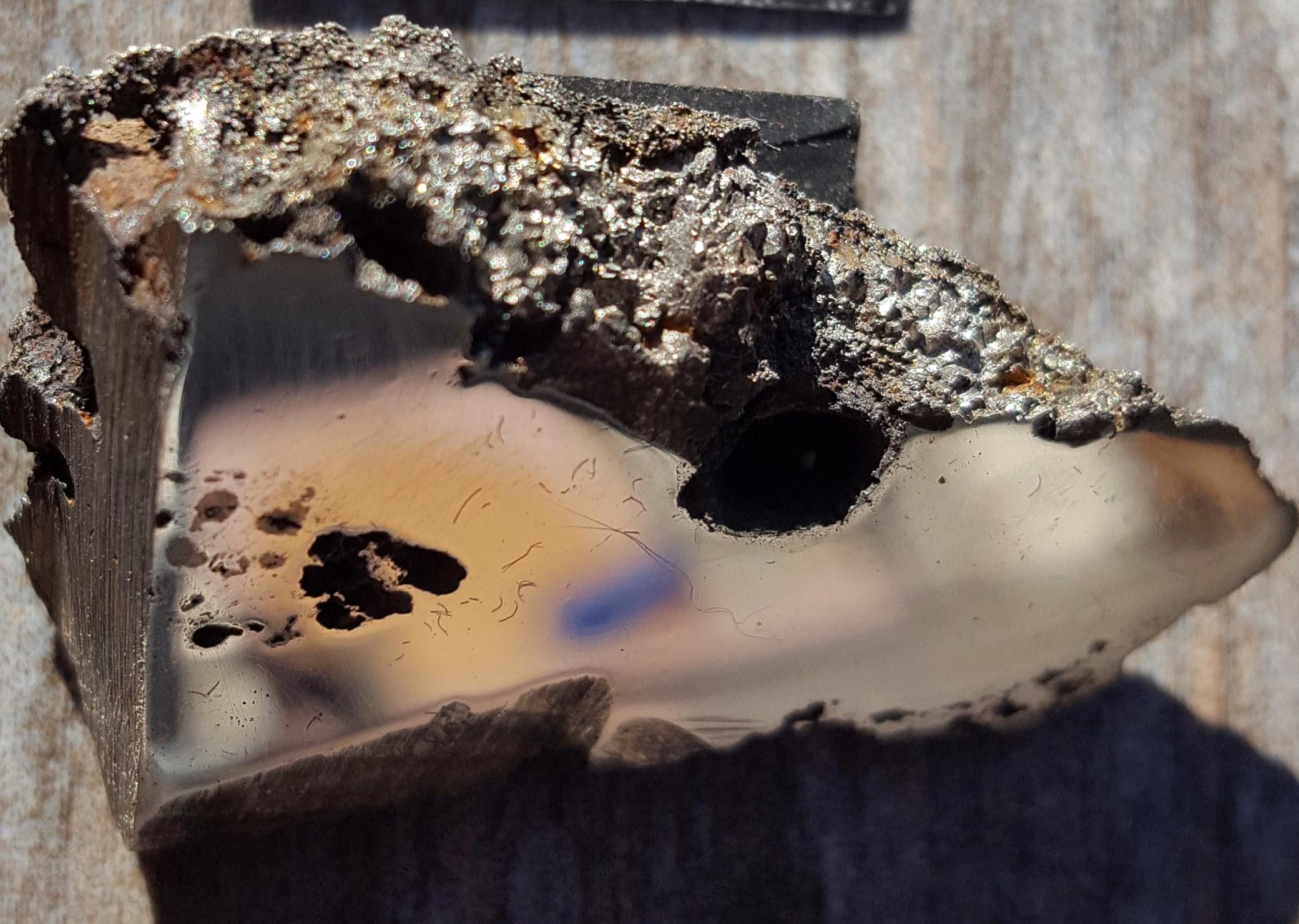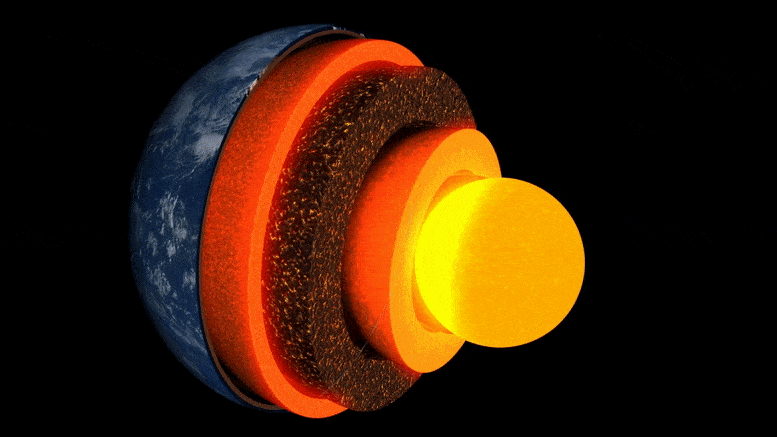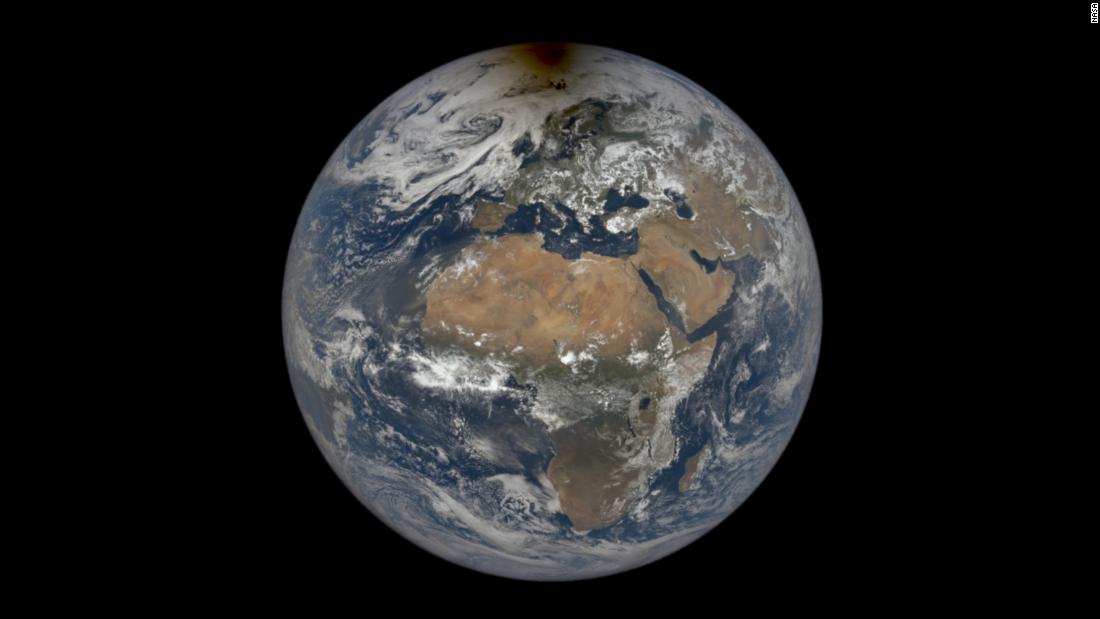
تحتوي شريحة من نيزك El Ali ، الموجودة الآن في مجموعة Meteorite التابعة لجامعة ألبرتا ، على معدنين لم يسبق له مثيل على الأرض. الائتمان: جامعة ألبرتا
قد تكشف المعادن الجديدة المكتشفة في نيزك ضخم عن أدلة على تكوين الكويكبات.
اكتشف فريق من الباحثين معدنين جديدين على الأقل لم يسبق لهما مثيل على الأرض في نيزك يبلغ وزنه 33000 رطل (15000 كجم) عثر عليه في الصومال في عام 2020. هذا النيزك العملاق هو تاسع أكبر نيزك يتم العثور عليه على الإطلاق.
يقول كريس هيرد ، الأستاذ في قسم علوم الأرض والغلاف الجوي وأمين الجامعة: “عندما تجد معدنًا جديدًا ، فهذا يعني أن الظروف الجيولوجية الفعلية ، كيمياء الصخور ، كانت مختلفة عما تم العثور عليه من قبل” من مجموعة نيزك ألبرتا. “هذا ما يجعل هذا مثيرًا: في هذا النيزك بالذات لديك اثنان من المعادن الموصوفة رسميًا والتي تعتبر جديدة في العلم.”
تم إرسال شريحة واحدة تزن 70 جرامًا من النيزك إلى جامعة ألبرتا لتصنيفها ، حيث تم اكتشاف المعدنين. يبدو أن هناك بالفعل معدن ثالث محتمل قيد الدراسة. يلاحظ هيرد أنه إذا حصل الباحثون على المزيد من العينات من النيزك الضخم ، فهناك فرصة للعثور على المزيد من المعادن.
تم تسمية المعدنين المكتشفين حديثًا باسم elaliite و elkinstantonite. الاسم الأول ، elaliite ، يأتي من النيزك نفسه ، والذي يُطلق عليه رسميًا “العلينيزك لأنه تم العثور عليه بالقرب من بلدة العلي في منطقة هييران في الصومال. عين القطيع ثاني معدن إلكينستانتونايت بعد ليندي إلكينز تانتون ، نائب رئيس مبادرة الكواكب في جامعة ولاية أريزونا ، والأستاذ في كلية استكشاف الأرض والفضاء بجامعة ولاية أريزونا ، والباحث الرئيسي في[{” attribute=””>NASA’s upcoming Psyche mission.

A slice of the El Ali meteorite contains two minerals never before seen on Earth. Credit: University of Alberta
“Lindy has done a lot of work on how the cores of planets form, how these iron-nickel cores form, and the closest analogue we have are iron meteorites. So it made sense to name a mineral after her and recognize her contributions to science,” Herd explains.
In collaboration with researchers at the University of California, Los Angeles (UCLA) and the California Institute of Technology (Caltech), Herd classified the El Ali meteorite as an “Iron, IAB complex” meteorite, one of over 350 in that particular category.
As Herd was analyzing the meteorite to classify it, he saw something that caught his attention. He brought in the expertise of Andrew Locock, head of the University of Alberta’s Electron Microprobe Laboratory, who has been involved in other new mineral descriptions including Heamanite-(Ce).
“The very first day he did some analyses, he said, ‘You’ve got at least two new minerals in there,’” says Herd. “That was phenomenal. Most of the time it takes a lot more work than that to say there’s a new mineral.”
Locock’s rapid identification was possible because the two minerals had been synthetically created before, so he was able to match the composition of the newly discovered natural minerals with their human-made counterparts.
Scientists are still examining the minerals in detail to determine what they can tell us about the conditions in the meteorite when it formed.
“That’s my expertise — how you tease out the geologic processes and the geologic history of the asteroid this rock was once part of,” says Herd. “I never thought I’d be involved in describing brand new minerals just by virtue of working on a meteorite.”
Herd also notes that any new mineral discoveries could possibly yield exciting new uses down the line.
“Whenever there’s a new material that’s known, material scientists are interested too because of the potential uses in a wide range of things in society.”
While the future of the meteorite remains uncertain, Herd says the researchers have received news that it appears to have been moved to China in search of a potential buyer. It remains to be seen whether additional samples will be available for scientific purposes.
Herd described the findings at the Space Exploration Symposium on November 21 at the University of Alberta’s ETLC Solarium.

“هواة الإنترنت المتواضعين بشكل يثير الغضب. مثيري الشغب فخور. عاشق الويب. رجل أعمال. محامي الموسيقى الحائز على جوائز.”





